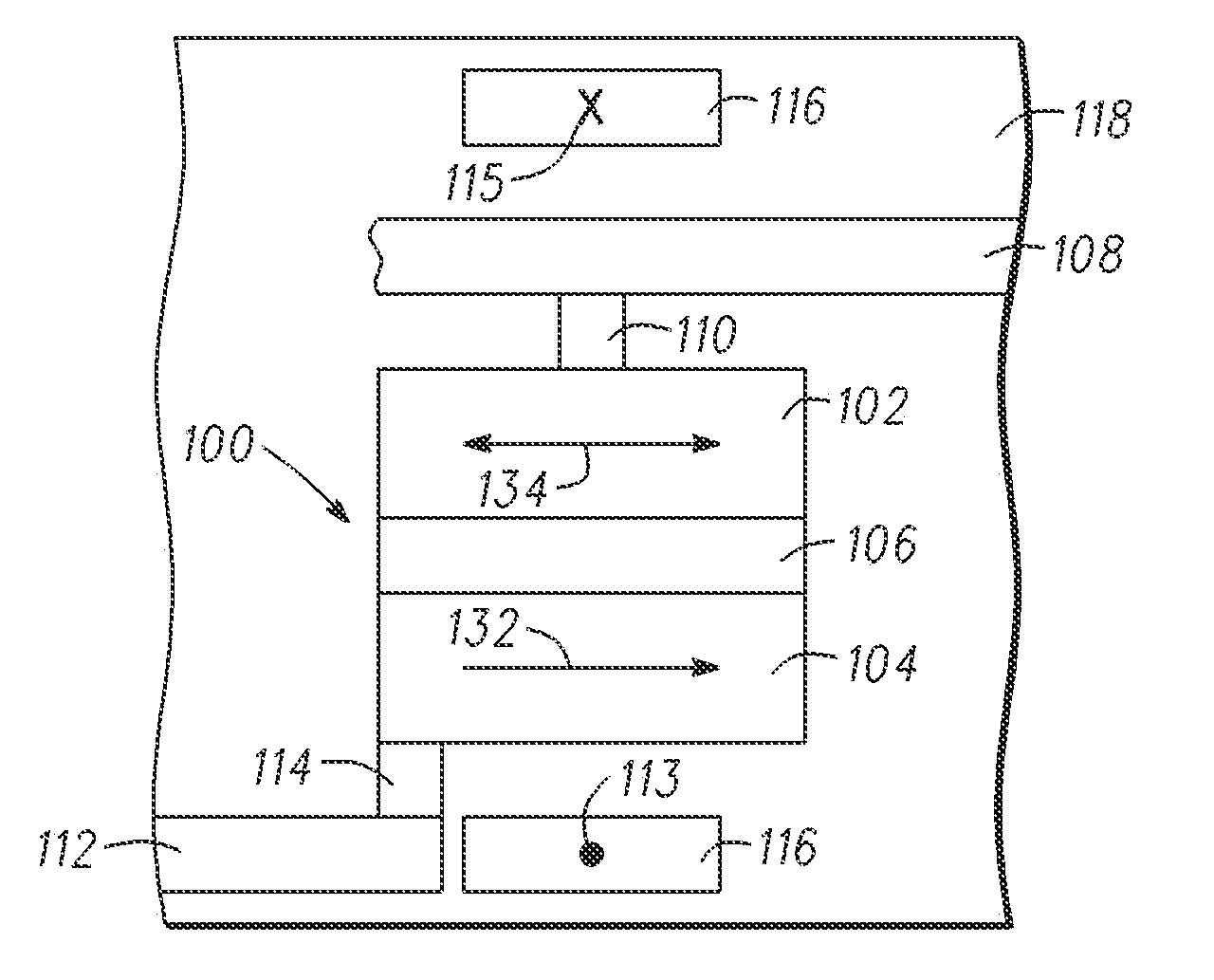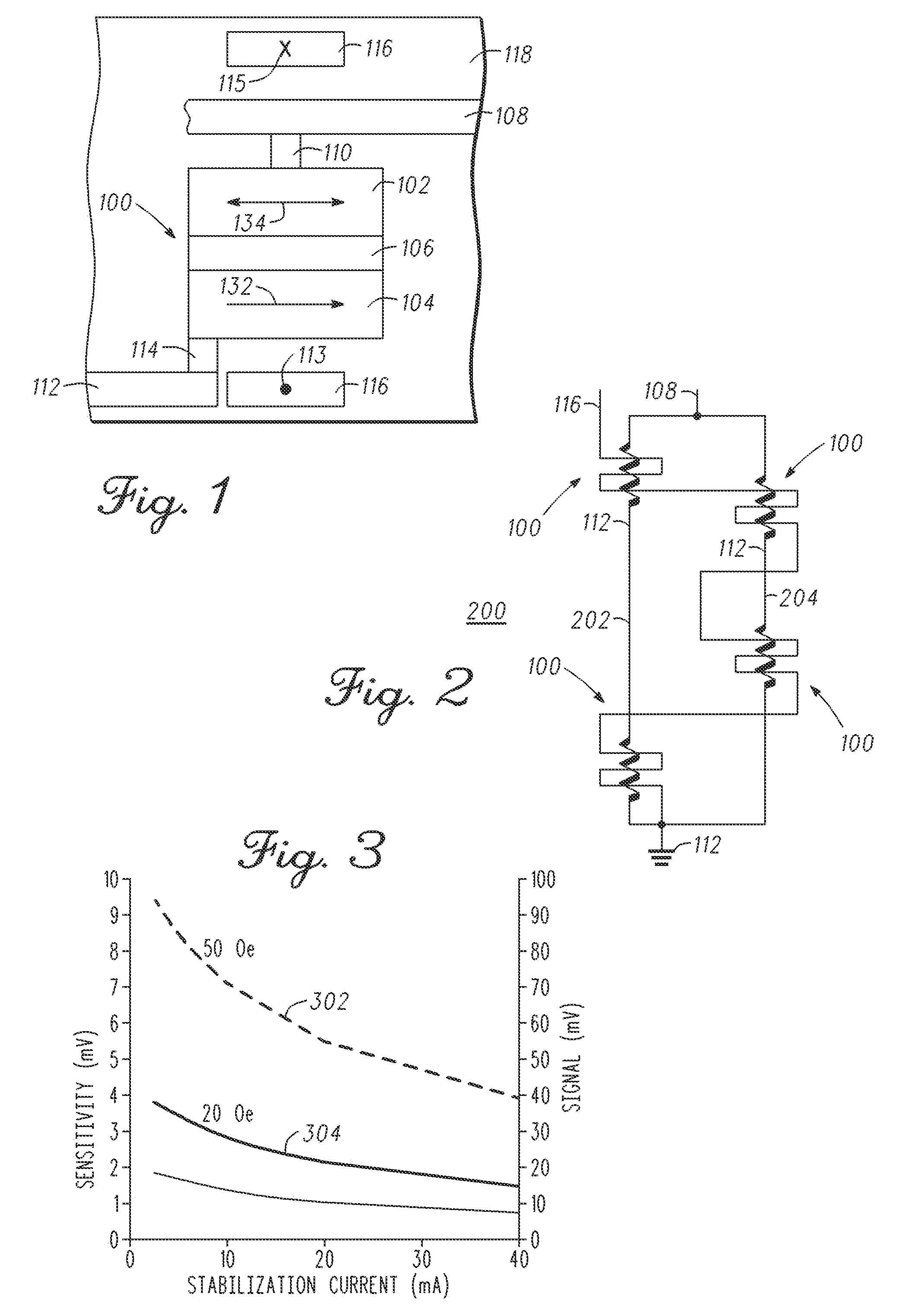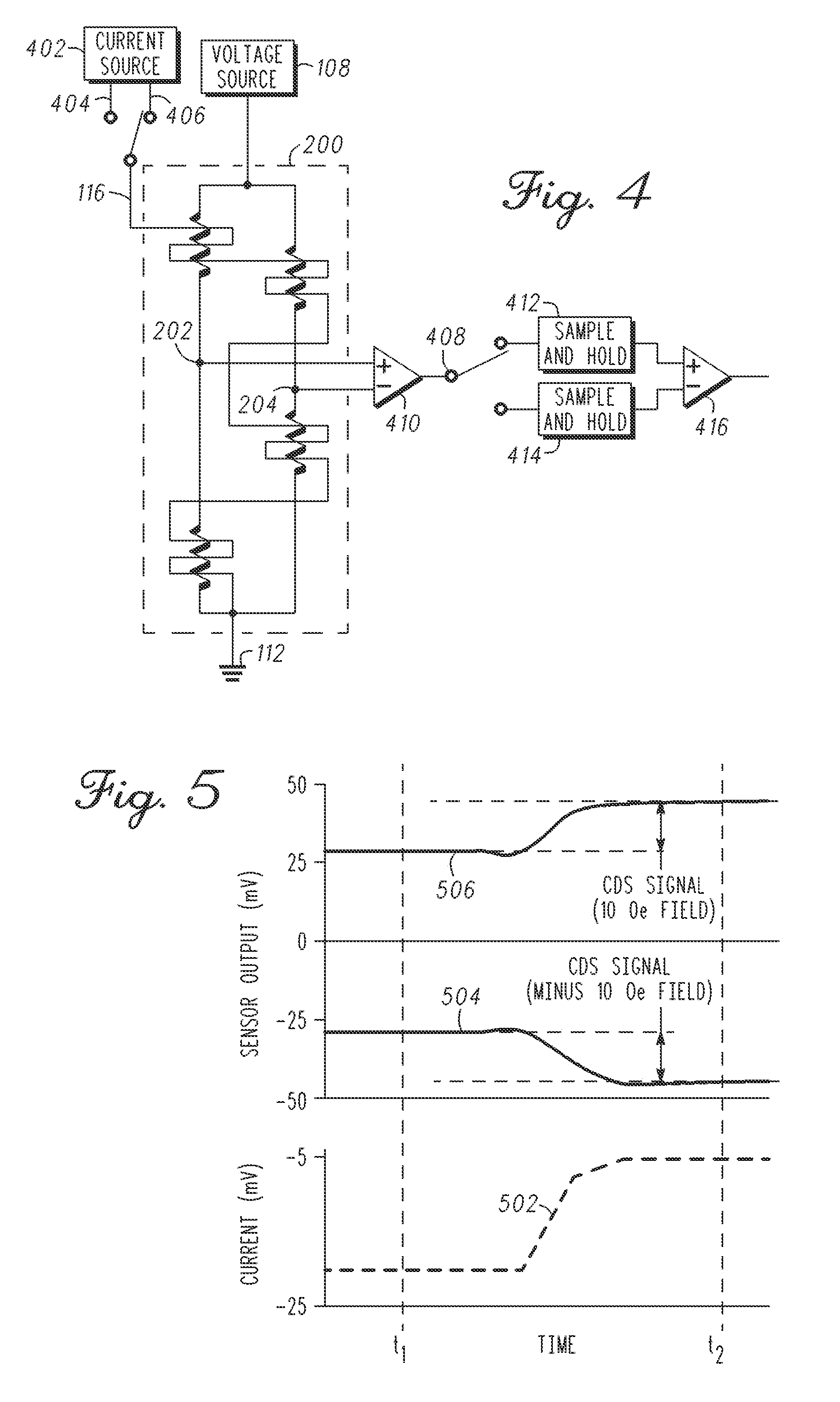Magnetic field sensing device
a sensing device and magnetic field technology, applied in the direction of measurement devices, magnetic measurements, instruments, etc., can solve the problems of large reset pulses from bulky coils of approximately 10 ma, high cost of amr sensor configuration,
- Summary
- Abstract
- Description
- Claims
- Application Information
AI Technical Summary
Benefits of technology
Problems solved by technology
Method used
Image
Examples
Embodiment Construction
[0014]The following detailed description of the invention is merely exemplary in nature and is not intended to limit the invention or the application and uses of the invention. Furthermore, there is no intention to be bound by any theory presented in the preceding background of the invention or the following detailed description of the invention.
[0015]Small footprint magnetic sensors typically are laid out in a Wheatstone bridge configuration, where a precise balance between the resistances of the circuit elements must be maintained for the bridge to produce a minimal response in a zero magnetic field. Any nonzero response (bridge offset) present from the manufacturing process must be calibrated or nulled out to produce signals that are free from error. These offsets may shift over the lifetime of the part, in response to temperature changes, mechanical stresses, or other effects. In a compass application with a typical field response of 1.0 to 5.0 mV / V / Oe, maintaining an accuracy o...
PUM
 Login to View More
Login to View More Abstract
Description
Claims
Application Information
 Login to View More
Login to View More - R&D
- Intellectual Property
- Life Sciences
- Materials
- Tech Scout
- Unparalleled Data Quality
- Higher Quality Content
- 60% Fewer Hallucinations
Browse by: Latest US Patents, China's latest patents, Technical Efficacy Thesaurus, Application Domain, Technology Topic, Popular Technical Reports.
© 2025 PatSnap. All rights reserved.Legal|Privacy policy|Modern Slavery Act Transparency Statement|Sitemap|About US| Contact US: help@patsnap.com



